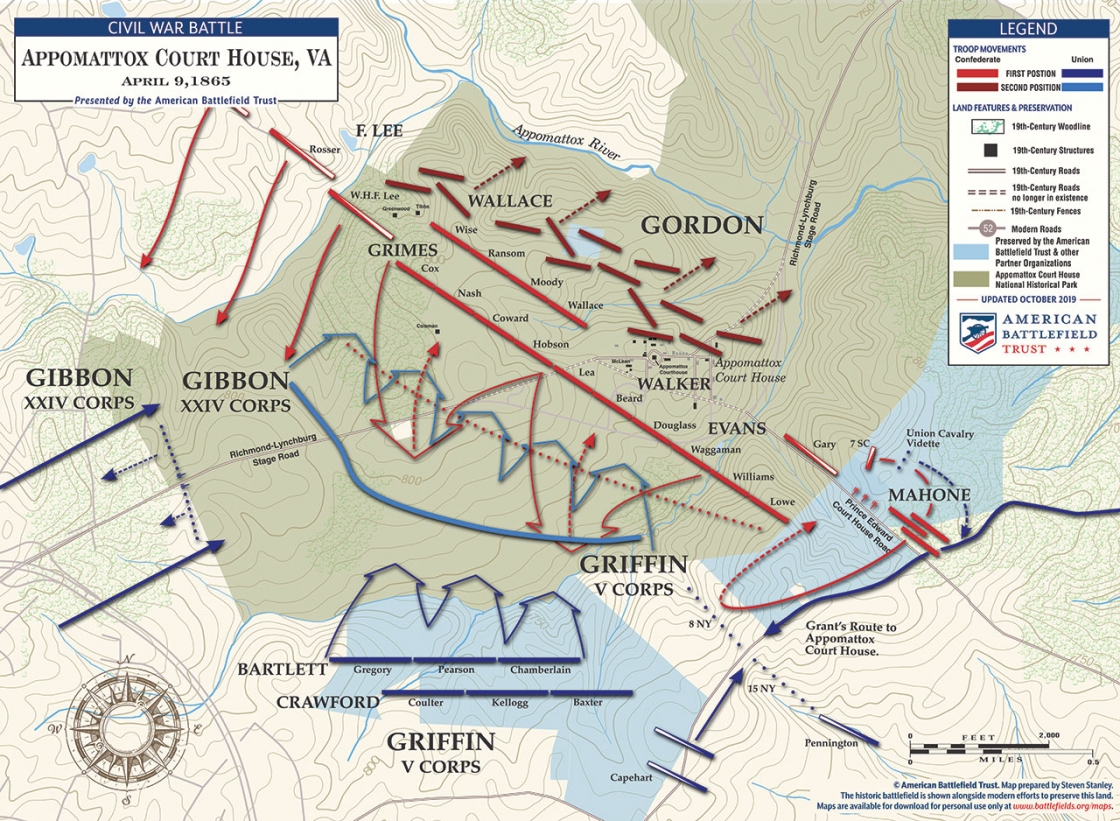Table Of Content

Suchworkers, however, are not paid by WRA for the performance of their religiousduties. Thejob of this agency, briefly, is to assist in the relocation of any personswho may be required by the Army to move from their homes in the interestof military security. So far, the work of the WRA has been concerned almostexclusively with people of Japanese descent who formerly lived close tothe Pacific rim of the country. Not only were the terms rejected, but Grant told Sherman he was being given 48 hours to obtain Johnston’s surrender on the same terms offered to Lee, or Union troops were to resume hostilities, either by attacking Johnston and his army or following if they should retreat…. While Sherman waited for Federal authorities in Washington to approve the agreed-upon terms, he had his men set to work rebuilding railroads and telegraph lines.

Aftermath of the Battle
Trapped by the Federals near Appomattox Court House, Confederate general Robert E. Lee surrendered his army to Union general Ulysses S. Grant, precipitating the capitulation of other Confederate forces and leading to the end of the bloodiest conflict in American history. Upon hearing about Lee's surrender, General Nathan Bedford Forrest, future leader of the Ku Klux Klan, also surrendered, reading his farewell address on May 9, 1865, at Gainesville, Alabama. General Edmund Kirby Smith surrendered the Confederate Trans-Mississippi Department on June 2, 1865, in Galveston, Texas. Also on May 26, 1865, the Camp Napoleon Council of Native American tribes, including a number that had sided with the Confederacy, met in Oklahoma and decided to have commissioners offer peace with the United States. Cherokee Chief and General Stand Watie, in command of 1st Cherokee Mounted Rifles, surrendered the last sizeable organized Confederate force on June 23, 1865,[35] in Choctaw County, Oklahoma. The signing of the surrender documents occurred in the parlor of the house owned by Wilmer McLean on the afternoon of April 9.
Edit My Account
Union cavalry destroyed a significant number of Confederate wagons at Paineville, Virginia, an action that made a swift arrival at Farmville more imperative than ever. Lee successfully blocked a Union attempt to prevent him from crossing the Appomattox River at High Bridge—but not without casualties. Thereafter, he ordered night marches to outpace Federal soldiers and compensate for the day lost at Amelia Court House. However, a sizable portion of his fatiguing troops were cut off from the rest of the army at Sailor’s Creek on April 6. His weakened army reached Farmville on April 7, but the Confederate troops were unable to eat much before Union troops entered their view.
Appomattox Court House NHP to host Homeschool Day
Described as “an advance of an acre of men”, the charging Confederates proved to be too great a force for the 71st Pennsylvania, formerly the 1st California, as they retreated upon seeing the great Rebel approach. Despite the 71st Pennsylvania’s retreat, the 69th and 72nd Pennsylvania, formerly 2nd and 3rd California, held their position and proved to be instrumental in the defense of the Angle. As nearby batteries began to fall to Armistead’s brigade, the defense of the Angle was left in the hands of the infantry, and the 69th Pennsylvania was the only nearby regiment. Constitution lists acts that states cannot undertake, and secession is not on that list. He then notes that the 10th Amendment says the federal government only has powers spelled out in the Constitution or delegated by the states, which he says means the right to decide if a state would remain part of the U.S. is left up to each state. After Lee left the McLean House on April 9, some of the Union officers present promptly bought much of the furniture in McLean’s parlor.
Early on April 9, 1865 the remnants of John Brown Gordon’s corps and Fitzhugh Lee’s cavalry formed a line of battle at Appomattox Court House. Gen. Robert E. Lee was determined to make one final attempt to reach his supplies at Lynchburg and escape Ulysses S. Grant’s ever-tightening noose. At dawn the Confederates advanced, initially gaining ground against Sheridan’s cavalry. The arrival of Charles Griffin’s Federal infantry, however, stopped the advance in its tracks. After a brief engagement a Confederate horseman was seen galloping toward Union lines holding aloft a white flag.
Explore This Park

The American Battlefield Trust has preserved additional acreage which includes ground used during Griffin’s counterattack and land where Bvt. Maj. Gen. George Armstrong Custer’s cavalry division checked an advance down the LeGrand road by members of Brig. Gen. Martin Gary’s Confederate cavalry brigade. Consumerenterprises, such as stores, canteens, barber shops, and shoe-repairestablishments are maintained at the relocation centers in order to thatthe residents may purchase goods and services which are not provided aspart of the regular subsistence. Educationthrough the high-school level is provided by WRA for all school-age residentsof the relocation center.
Surrender at Appomattox - National Review
Surrender at Appomattox.
Posted: Tue, 09 Apr 2024 07:00:00 GMT [source]
Battle of Sailor’s Creek
The success of Custer’s troopers on the evening of April 8, dispersing and capturing Walker’s artillery and securing the Richmond-Lynchburg Stage Road were vital—the Federals now held the high ground west of Appomattox Court House, squarely across Lee’s line of march. With Lee’s line of retreat blocked, his only options on April 9, 1865, was to attack or surrender. He held a Council of War the night of April 8, and it was determined that an assault would be made to open the road, believing that only Federal cavalry blocked the way. However, during the night parts of three Federal Corps had made a forced march and were close at hand to support the Federal cavalry in the morning. Martin’s battery fought aggressively on the Confederate left, continuously firing while boldly moving forward. Custer’s men made two or three probing assaults, none very anxious to get too close the walls of iron being thrown at them by the discharges of canister.
Who Won the Battle of Appomattox Courthouse? - The Collector
Who Won the Battle of Appomattox Courthouse?.
Posted: Fri, 12 Jan 2024 08:00:00 GMT [source]
As in the eastern portion of the country, demographic variance brought about the split between Unionists and Confederate sympathizers, creating an environment mirroring the needs and concerns of Easterners engulfed by the raging secession crisis and outbreak of war. TheUnited States Government having called upon these people to move from theirhomes, also assumed a responsibility for helping them to become established.To carry out this responsibility, the President on March 18, 1942, createda civilian agency known as the War Relocation Authority. And Catalina, no longer under federal occupation, is also available to visitors. So will Hollywood Forever Cemetery, where the Long Beach chapter of the United Daughters of the Confederacy maintains a Confederate monument. Fearful of a secessionist revolt, the federal government built Camp Drum in San Pedro in 1861 (now the Drum Barracks Civil War Museum) to maintain order.
Military situation
General Lee's final campaign began on March 25, 1865, with a Confederate attack on Fort Stedman, near Petersburg. General Grant’s forces counterattacked a week later on April 1 at Five Forks, forcing Lee to abandon Richmond and Petersburg the following day. The Confederate Army’s retreat moved southwest along the Richmond & Danville Railroad. Nevertheless, he led a series of grueling night marches, hoping to reach supply trains in Farmville, Virginia, and eventually join Maj. Gen. Joseph E. Johnston’s army in North Carolina. He ordered Major General John B. Gordon’s 2nd Corps of the Army of Northern Virginia to attack Major General Philip Sheridan’s Cavalry early in the morning.
Duringthe spring and summer of 1942, the United States Government carried out,in remarkably short time and without serious incident, one of the largestcontrolled migrations in history. This was the movement of 110,000 peopleof Japanese descent from their homes in an area bordering the Pacific coastinto 10 wartime communities constructed in remote areas between the SierraNevada Mountains and the Mississippi River. These objects from that day a century-and-a-half ago act as silent witnesses to remind us of a truly remarkable time when two generals helped choreograph an unusually understanding armistice between two war-weary combatants.
The last large Confederate military force was surrendered on June 2 by Lt. Gen. Edmund Kirby Smith in Galveston, Texas. Yet Brig. Gen. Stand Watie, the first Native American to serve as a Confederate general, kept his troops in the field for nearly a month after Smith gave up the Trans-Mississippi Army. On June 23, Watie finally acknowledged defeat and surrendered his unit of Confederate Cherokee, Creek, Seminole and Osage troops at Doaksville, near Fort Towson (now Oklahoma), becoming the last Confederate general to give up his command. At the surrender ceremonies, about 28,000 Confederate soldiers passed by and stacked their arms.[28] General Longstreet's account was 28,356 officers and men were “surrendered and paroled”.[29] The Appomattox Roster lists approximately 26,300 men who surrendered.


No comments:
Post a Comment